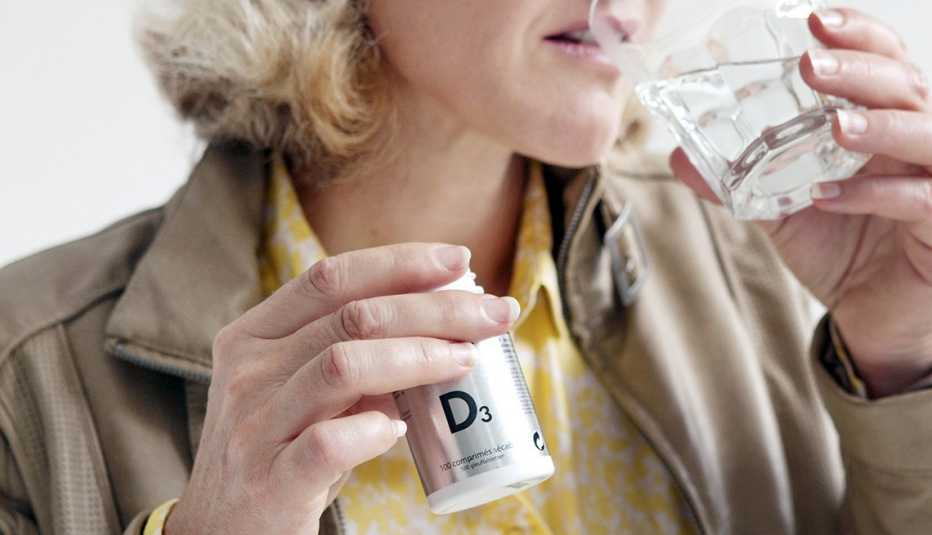Staying Fit


You know vitamin D can help you fend off osteoporosis and falls. But if recent headlines have you thinking you might want to pop some more of it to avoid a severe case of COVID-19, know that researchers are still sorting out how, exactly, a deficiency in the vitamin may make you more vulnerable to the disease's more serious symptoms.
For now, experts such as those publishing in a recent BMJ Nutrition, Prevention & Health report don't recommend you boost your intake to avoid COVID-19 complications. As they wrote, “There is no strong scientific evidence to show that very high intakes (i.e., mega supplements) of vitamin D will be beneficial in preventing or treating COVID-19.” What's more, there are risks involved with downing excessive doses of the vitamin — particularly for those with health conditions such as kidney disease.


AARP Membership— $12 for your first year when you sign up for Automatic Renewal
Get instant access to members-only products and hundreds of discounts, a free second membership, and a subscription to AARP the Magazine.
While researchers continue to research a possible link between COVID-19 and vitamin D levels, here's what we do know about this bone-building (and muscle-strengthening!) nutrient — and how to know if you need a supplement to get the recommended daily allowance.
Crucial for your bones, heart and more
Could You Be Deficient?
Consider having your vitamin D levels tested if …
- You don't get a lot of sun. People who live in colder climates are particularly at risk for a dip in D levels during winter months, since shorter days and full-coverage clothing limit exposure to UVB rays.
- You're over 50. As we get older, we lose some of our ability to synthesize vitamin D from sunlight and from the food we eat.
- You're carrying extra pounds. Studies have suggested a link between obesity and excess body fat — particularly around your middle — with low vitamin D levels. According to one study, for every 10 percent increase in body mass index (BMI), a person can expect to have a 4.2 percent drop in blood levels of vitamin D.
- You have dark skin. Excess melanin, the protective pigment that gives skin its color, hinders the skin's ability to make vitamin D from sun exposure.
- You've got gut issues. Conditions that affect our gastrointestinal system, such as Crohn's disease and celiac disease, do not allow the intestines to absorb enough vitamin D. Certain medications — steroids, for one — can also mess with absorption.
By now, most of us know that vitamin D plays an important role in promoting the absorption of bone-fortifying calcium. But in this case, more is not necessarily more: “If your vitamin D level is sufficient, it doesn't seem like you get a lot of benefit from supplementation,” says Karl Nadolsky, , a clinical endocrinologist and clinical assistant professor of medicine at Michigan State University.
Those of us who are deficient in the vitamin — an oft-cited study puts the number at over 40 percent of the U.S. population — may reap benefits from raising their levels. “We know that having very low levels of vitamin D is bad for a lot of things, especially bones,” Nadolsky says. “It's certainly associated with a lot of things, like type 2 diabetes, cardiovascular health, even early death.” Vitamin D deficiencies have also been linked to breast cancer. Problem is, it's hard to tell if a deficiency of this type is a consequence of ill health, or its cause.

































































More on health
How to Eat Less Meat (and Hardly Even Notice)
Research shows health benefits of a 'flexitarian' diet. Here's how to get startedCould Decreasing Inflammation Be the Cure for Everything?
Managing your body's immune response is key to diseases of agingDietary Supplement Scams
How to spot fake dietary supplement scams